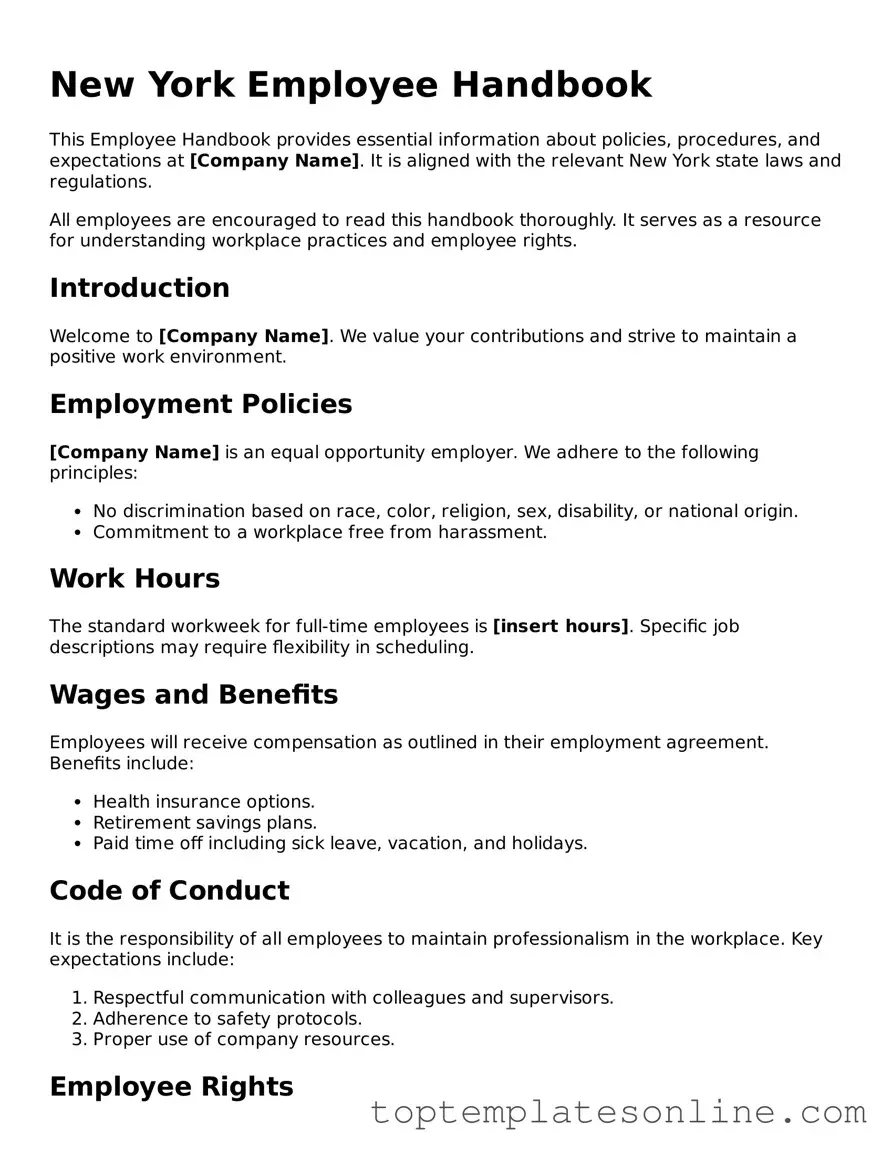The New York Employee Handbook form serves as a crucial document for businesses operating within the state, outlining essential policies and procedures that govern the employer-employee relationship. This form typically includes vital information such as workplace expectations, employee rights, benefits, and compliance with state and federal laws. It addresses topics like anti-discrimination policies, workplace safety protocols, and procedures for reporting grievances. Furthermore, the handbook often details attendance and leave policies, outlining the processes for requesting time off and the implications of absenteeism. By providing clear guidelines, this form helps to foster a positive work environment and ensures that employees understand their roles and responsibilities. Companies must ensure that the handbook is not only comprehensive but also easily accessible to all employees, as it serves as a reference point for workplace conduct and expectations. In an ever-evolving legal landscape, keeping the employee handbook updated is essential to mitigate risks and enhance employee engagement.
